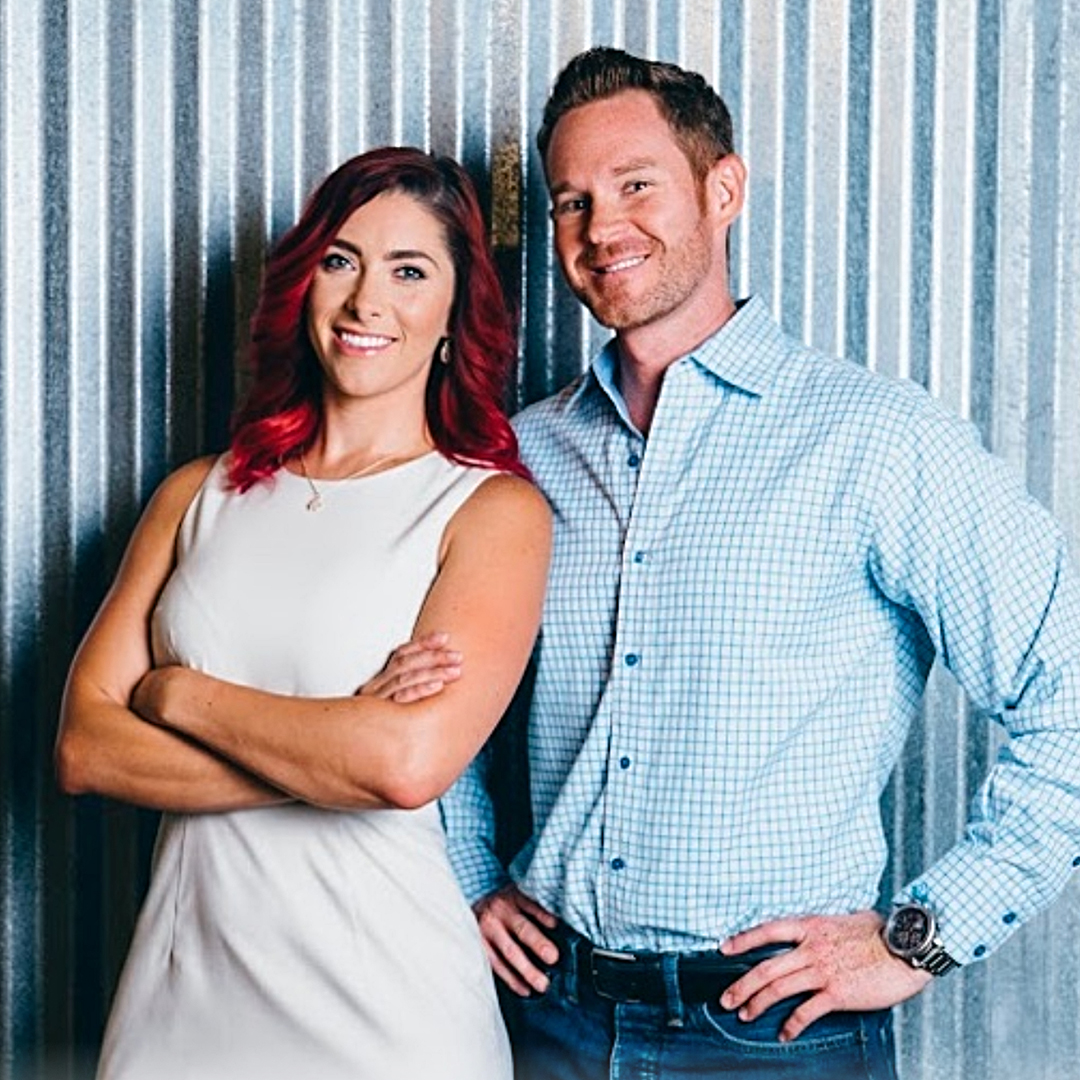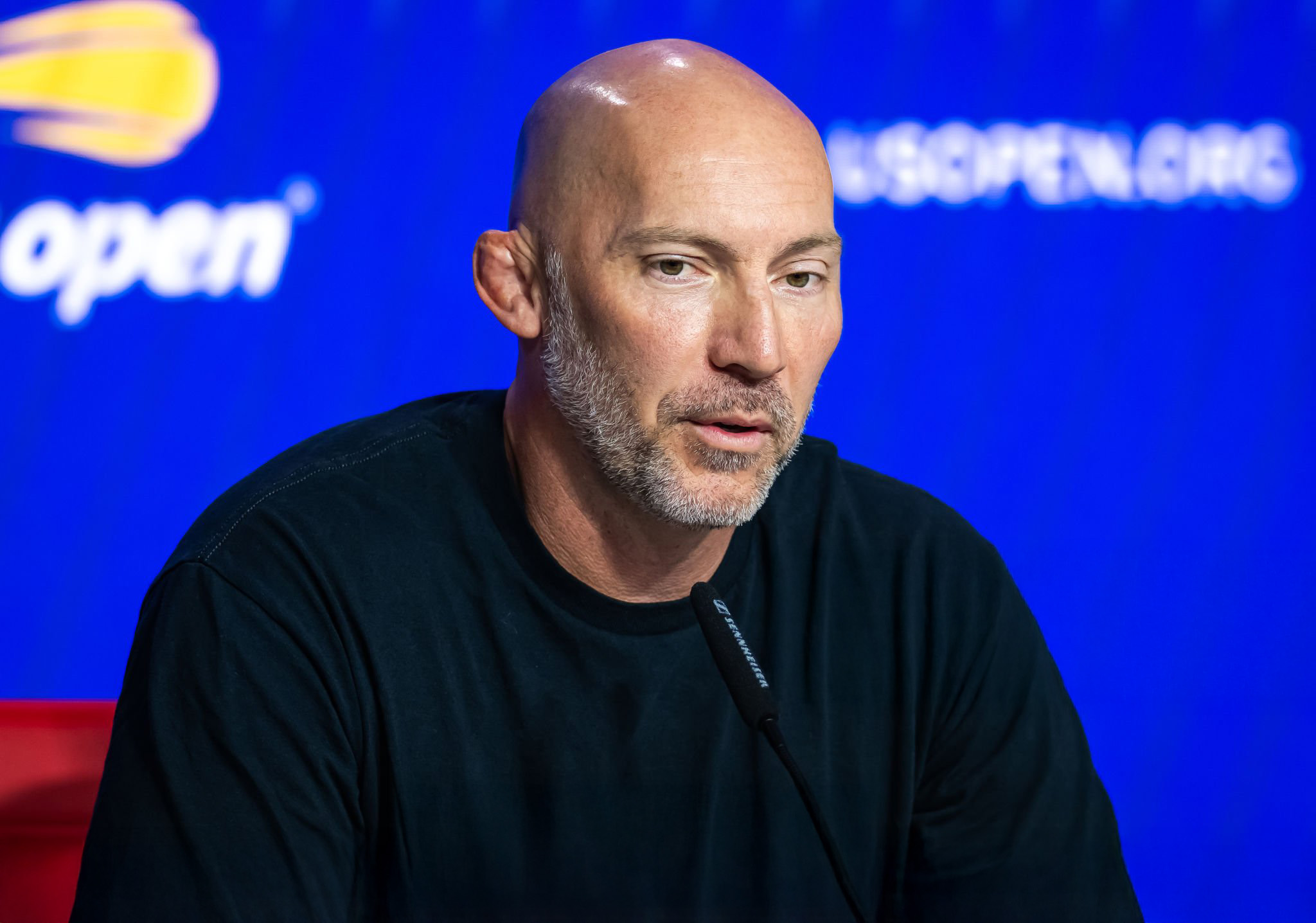RV: (00:06) Hey, brand builder, Rory Vaden here. Thank you so much for tuning in to listen to this interview, we are so excited to bring you this information and wanted to let you know that, Hey, there’s no sales pitch coming from anything that we do with this is all our value add to you and the community. However, if you are somebody who is looking for specific strategies on how to build and monetize your personal brand, we would love to talk to you and we offer a free call to everyone. That’s interested in getting to know us and is willing to give us a chance to get to know them and share a little bit about what we do. So if you’re interested in taking us up on a free strategy call, you can do that at brand builders, group.com/summit call brand builders, group.com/summit. Call. Hope to talk to you soon on with the show, nerds are going to take over the world. RV: (01:06) That’s what somebody told me when I was young. And I was like, hell yeah, I’m going to be a nerd. Who’s going to take over the world. And these two days, you’re about to meet. These are super sexy data nerds. They are a beautiful couple, extremely intelligent AJ Yager and Meaghan Connell. And they are close personal friends of ours. They’re clients of brand builders group. More importantly, we are clients of theirs and they are one of our most impactful vendors without a doubt. Their data dashboards have literally automated the work of what we’ve had, like two full time people doing. And so this is what we’re talking about. Okay. So they are a data driven power, couple. They are the cofounders of a company called Praxis metrics. So this is one of the fastest growing data dashboard companies in the world. And they’ve got a team of like 30 different, you know, 30 data scientists and engineers that, that provide like major company insights and tracking and reporting, but at a fraction of the cost. RV: (02:12) And one of the things that is very unique about them that you should know about is we have a hyper special arrangement with them where we have been working with them over a couple of years to build our, our personal brand dashboard. And we have it set up exactly how we want it and their team helps implement that for our clients. So they are amazing and they’re geniuses, and we’re going to talk about all things, data, and tracking, and dashboards, and it’s going to blow your mind, just watch. So anyways, friends, welcome to the show. MC: (02:48) Thank you for having us where you’re so excited to be here. AY: (02:51) Always a pleasure to hang out with. I hang out with you and sexy data nerds. That’s that’s pretty, that’s a nice compliment. Thank you. Yeah. Yeah. Well, and you know, data rich, you’re helping people. RV: (03:02) I mean, I guess, you know, when I think of describing you, I kinda think like, okay, this is data dashboards. You help us automate, tracking and reporting so that we know what marketing is working, how much we can afford to spend. What’s the lifetime value of our customers. Are those, how would you describe what y’all do to specifically? I know that you work with a lot of bigger companies too, but most of the people following us, right? Or like, you know, their speaker, author, personal brand types. So like, how would you describe what you do? MC: (03:36) I think the first distinction we want to make is, you know, data, most people, as soon as they hear it, they glaze over and, and data. Isn’t just ones and zeros. It’s not math and science it’s information, that’s all data is right. And if you were to think about your brand and another brand, and if one of you guys had more information than the other, who do you think would win? Naturally, whoever has more information, whoever has more knowledge about whether it’s their clientele, their target demographic about their area of expertise, right? Information has always been and will always be a competitive advantage to those who have it. And so what we do is we help individuals and companies become more informed about their own clientele and about all of the information that they can gather that will help them do better in life and do better in business. RV: (04:31) Yeah. So is that, is that the spot on? Yeah, so I love it. And for those of you that don’t know, like a data dashboard, this is like this, the coolest thing I wish I could show people this, like, if you’ve never seen one, it’s like, it’s just a website that you log into and it tracks you. It can, I mean, this tool, the way y’all set up, it can track everything, but it pulls like ours starts with front end traffic. So it pulls like we basically start with like our social media reach and what’s going on with social media and our engagement in our followers. And so were you guys pull in our data from Instagram and Facebook and LinkedIn and, and Google analytics. So then we go from social media to then like Google analytics, how much traffic are we getting to our site? RV: (05:23) And then we look at how many people from our site are getting into our funnels and like in our email list. And then you show us every single stage, what percentage of people opt in which people make to the percentage of the next checkpoint? What percentage of people buy, how long they stay in the program, what their average lifetime value is. Anyway, so there’s probably supposed to be a question in there somewhere, but I get so excited about this. So what do you think that personal brand specifically need to know and be thinking about when it comes data and how data can help them make more money? Yeah. MC: (06:02) And I think you hit the nail on the head. It’s the fact that they need to understand their entire customer journey, right? And the problem is you use 15 to 20 different technologies to, to gain customer awareness, to nurture your clients, to then convert them and then to fulfill your services. Right? And so with each of these different systems, it’s all tracking one individual piece of that customer’s journey. And so without the ability to aggregate that all together, to take all of these disparate pieces of information, like, Hey, this customer clicked here. And then they went and purchased here. If those all stay disparate, then you can’t understand what’s working and what’s not working. Right. And our goal is to help brands scale and to help individuals scale by understanding what’s working and not working. Because if you can eliminate areas of waste in your organization, that becomes a catalyst, right? Because a lot of people that we work with, they focus on optimizing, optimizing, optimizing. But if you’re also, you know, it’s kind of like the, if the front door is opening, you’re bringing in more leads and then the back door is also open and you’re losing a bunch, right. You’re never going to grow. You’re never going to scale. So our goal is first to eliminate areas of waste, whether it’s wasted time. Right. And how much time are you spending, looking up all of these things, how much money are you spending on this RV: (07:24) Excel spreadsheets galore? Like someone logging in going to Instagram, pull on analytics, putting on a spreadsheet, going into Google, going like every, like you’re saying, I mean, you just like that, was it 20 different systems to log in just to know what happened last week? Like, are we growing or are we shrinking? Are we reaching more people? Are there any of them paying attention or any of them engaging? Yeah, spreadsheet, hell, it’s a real thing. It really is spreadsheet. And you kind of do that. And that’s one of the things probably practically you do is it’s like you kind of eliminate spreadsheets and you like automate, you basically like make a spreadsheets where they automate themselves in a digital thing that updates every 60 seconds. Right? Right. AY: (08:13) Not to knock spreadsheets. It’s a part of the journey that you’ve got to go on. MC: (08:16) It’s an important stepping stone, right. In order to understand the value of data, you have to first manually aggregate it and be like, Oh wow. Knowing my conversion rates actually helps me make better decisions. Right. And it helps me understand where to spend it and where not to spend. So it’s important for you to start out as a business where, where you’re kind of going through these spreadsheets. Cause it, it makes you understand what KPIs are important, right? What are those things that are measures that will actually help you and will help you make better decisions? Okay. RV: (08:44) Would say before, that is what business questions need to be asked right now. What is most important? Right. Cause there’s a lot of things we could do, but it’s really, what should we do based on where we are in the business from a revenue standpoint, from a traffic, from a conversion standpoint, what’s working, what’s not, it’s a lot of like bringing the insights and the data into a point where that answers the business questions that are crucial to your goals right now. Yeah. Yeah. Just to get it for us. As a, as an example, you know, it’s interesting, my vision and passion has always been around like the marketing and tracking all of that. But we actually first engaged you to automate our commission statements and more of like our accounting. And I think that’s something that people don’t realize is like the power is, you know, we think like marketing and sales, like social media and Google analytics, but y’all automated our commission reports for our affiliates and for our salespeople. And like also our sales reporting of like just how long their people are in certain stages and all that kind of stuff. So there’s a lot you could do here. AY: (09:51) And then the sexy part is the sales and marketing. That’s usually the best place to start for ROI, but in your case, AJ and part of the team were probably ripping their hair out, trying to do all that stuff, which is, again, I didn’t find the waste and where can we automate things that people where people should not be doing. MC: (10:05) And honestly, that’s how we got into this business. We were a marketing agency and one of my top, most valued employees who was brilliant, he was reduced down to data entry. He was logging into 12 different systems, putting it all into a spreadsheet, just so that we can understand what split tests works, you know, where we were seeing the most traffic and what we should do for the next week. And when he was doing that, he was basically not doing his actual job and where his super power was. And so our house, AY: (10:35) Which was not only marketing, but looking at that data for each client, going through it, looking at the patterns, the trends and things that needed to be changed. So he would do the reports, maybe have a limited amount of time to kind of give a quick little insight and then moved on to the next one. Whereas if he had spent flip that on this other side, but able to deliver those insights with those clients, it could have been even more impactful. MC: (10:56) So that goes back to organizational waste. We were paying the salary of a top marketer to do something that literally, you know, coding could do. And that’s why we started this company was really because we were a small company and we didn’t have unlimited resources. And so we needed to pull as many levers as we could to automate and reduce the amount of waste in our organization. And that was the big thing was, you know, I was spending a lot of time doing financial like financials spreadsheets. He was doing the marketing spreadsheet. So looking at each area of the business, whether it’s fulfillment, marketing sales, and then saying, where, where can we reduce all of this human error or human effort? And then once that’s been reduced, right, you now have that person that their skill set can now be used. And they can now, like AJsaid, start analyzing, really start looking for these patterns and not just seeing what happened, but why it happened. MC: (11:53) And cause if you can understand the underlying levers, you know, and what, what really caused these outputs. And then you can start to move into a business model where now, you know, what happens and why it happens. And more importantly, how to make that happen in the future. And that’s where we’ve been able to help brands really shift from being on the treadmill and not understanding why they’re successful or how they’re successful to having a repeatable formula of success, an algorithm to scale. And then all it is is printing money because they know if I do X, Y, and Z, here’s the results I get every single time because I understand why it works. And then they can just go and repeat, repeat, repeat, and scale. RV: (12:36) Yeah. And not you, you know, you said that earlier, like we help brand scale. I really think that’s so compelling. And that is, that is part of as a clear part. I think you eliminate ways to reduce costs and you also help scale on the revenue side you know, in our MC: (12:55) Well, and on that note before we dive deeper, one thing that was an important delineation that I discovered in this journey as a business owner was the difference between growth and scale, because I was always focused on growth. How do we grow our top line revenue or our bottom line revenue, right? How do we grow, grow, grow that? And oftentimes growth needs you to spend more money. You need to hire more people. You need to spend more on systems. You need to increase your ad, spend, whatever it may be. Growth is not the end goal in order to scale, scale is a very different definition. Scale is when you can spend the exact same amount of revenue and increase your top line. So that’s where you get to increase your profit margin. That’s where you really get exponential growth is when the bottom line or when those expenses and cogs data saying. And so the difference between those two is, is my Newt, but it’s important because really as owners, we don’t want to be in a business where it’s just treadmill, treadmills, scraping a little bit off the top. We want to have that scale. And so, sorry, sorry to interrupt. RV: (14:00) Good. I think that’s a really cool distinction is that, you know, growth is, you know, growth is like you pump money into something and you make it grow scale is the idea that you, you streamline it. And so you squeeze more out of the money. You’re already spending data, allows you to do that. Not just the data like you’re saying data is the first part of it is like data collection, which I know we’ll talk about. Really what we’re trying to get to is like insights, right? From the data that we can apply. But, but you know one of our phase three events is called high traffic strategies. And that’s where we teach paid media. And we’re always telling our clients, don’t go to paid media so quickly. You’re wasting money because if you can’t track everything, Every single step of what happens After that click, you’re just wasting money. But once you that, like once you have the data, like you’re saying, you can just ramp the thing up because if, if I, I will put a million dollars in the front, as long as I can track and know for sure 2 million is coming out the back. And I feel like that is the thing that you guys do and that data data does. And your team specifically helps you do. And it’s almost like we can guarantee somebody’s brand to scale and to expand and to reach more people because we can, we can say we can afford to pay for it cause we know what it’s worth. Cause we’re, we’re tracking it. Is that feel right? Does that line up with what you would say and do? MC: (15:36) And a lot of our, a lot of clients that we work with are actually VC firms, right? So if anybody knows the value of numbers, it’s them, right? All they’re doing all day long is evaluating the potential success of a brand. And what they’re looking for are those specific levers. If I know without a shadow of a doubt that if I spend X and it produces, Y all I have to do is increase the money going into this company, and it’s going to, it’s going to expand. And so that’s what we’re doing is we’re really, we’re finding without a shadow of a doubt, what those KPIs are, what the levers are, what are the variables that impact it, and then presenting that, so that then you can take action and you can really make the make better decisions. RV: (16:19) Yeah. I mean, that, that kind of concept of like a predictable lever is just super, super duper powerful. So, alright. So I want to take it down a notch in terms a little bit more into the details. Okay. What is sort of like the first thing? All right. So if I’m sold, I’m like, okay, I see the vision here. Like now I understand why I should do this. And maybe it’s not me. Maybe it’s someone on my team, or maybe it’s a vendor like you, or whatever somebody is going to do this. How do I start? Right. Like if I’m not the Google analytics nerd, and I don’t understand tag manager, and, you know, I don’t know what all, what is the first thing I need to do or make sure my team does to like move in this direction. AY: (17:03) Well, first, before the doing part, I want to also speak to those out there who don’t want to become a data scientist, or don’t want to become a data engineer, but think they might need to, if you’re a founder or a team member, that’s not in the details and not somebody that’s maybe a savant with numbers, you don’t have to be that. That’s what we want to make sure there. The mindset is understanding that inside of data, there are answers there and that can really help you chart a path to success in your company, understanding how to work with the people. Well, first understanding that it’s really important to invest in your company and invest whatever kind of budget you may have at whatever level you’re at to getting clarity on your numbers and getting really good tracking in place and whatever reporting. Even if you’re in spreadsheet, hell right now that’s okay. At least you’re tracking certain things and reporting, but it’s, it’s okay. If, if you don’t have data background. And secondly, it’s also very difficult to maybe work with data scientists, or even understand how to hire one, which is why practice practice exists is we wanted to build that out for people and become an extension of their team. But it’s like, they know data is important. Know that you don’t have to be the, you know, don’t have to it’s if it’s to be it’s up to me type thing, but start asking the questions that we’re gonna go through here and start with tracking. MC: (18:13) Yeah. And yeah, we’re tracking. RV: (18:15) So before you get into tracking, just to, to Edify that, I would say, you know, this is something that, you know, cause AJ and I are, are all, you know, we’re very like, data-driven, this is one of the things that we want brand builders group to be the place where it’s like, we can prove, like we can show that this stuff works and we can track it and you can monitor and you can see it because so much of marketing and branding is like, yay, throw up a billboard, you know, like throw some money at it. And, and does it work? I don’t know, like, did it work or not? But yeah, so, so talk to me about, about tracking and again, specifically to personal brands, you know, like kind of keeping that context of what are some of the things that we should be doing, MC: (18:59) One of the foundational pieces for your tracking and Google analytics, it’s a free tool. It is something that is extremely powerful. We’ve got brands that are doing over 150 million in annual revenue, and they’re all using Google analytics, right? So it is an incredible tool that needs to be leveraged in your business. And like JJ said, if you’re not the one, if you’re the, you know, if you’re the thought leader or if you’re the face of the brand, it might not be you who needs to understand this, but you need to have somebody on your team. That’s owning this because it is the foundational aspect that can connect and collect all of the data around where your prospects came from, what they saw when they saw it, what they clicked and how they interacted with your brand before they decided to spend their first dollar. And all of that is a foundational piece to success. Yeah. AY: (19:46) I was just going to add to that as, as you also want to have that as a redundancy, because there’s other pieces of technology that we’re going to get into that are tracking data as well, but you have to find the source of truth. And by, by having Google analytics on everything that we can possibly and helps you without variability that gap analysis, right? So one is that Google analytics. And I want to be very specific in that, that doesn’t just mean having a coder, put the code on each page and be like, Oh yeah, I’m using Google analytics. That is not, I can’t accept that as a line that we had to raise the standard here. That means you’ve got to find a company or someone online that understands GA is certified in Google analytics and knows how to set up the advanced e-commerce tracking the triggers, the goals going inside of this engine and like building out everything that needs, that needs to be done for your, for your product or service, everything you’re doing for lead gen, all of that. So that’s one part of it. And then also using UTM. Yup. RV: (20:44) Alright. So fail. Everyone’s like okay. Messed that part up. But yeah, so, so, so it’s like version one point, I was like, get the code installed on your site, but you’re saying that you need to know, even if you don’t know how to do it, you need to know like there’s a lot more to it than that to really leverage the true power that’s available here. MC: (21:05) So, yeah. And here’s, here’s the reason why, okay, if you start a brand today and you don’t have this tracking setup, and then in two years, you’re at, you know, 5 million in annual revenue and you’re ready to hire a company like us to analyze your data. If you don’t have data, we can’t analyze it. If it has not been tracked, it does not exist. And so there are simple just buttons, like click buttons within Google analytics that aren’t defaulted as a selection. And if those aren’t collecting data, there’s no way for us to historically go back and find out who these customers were, where they came from and what their actions were. But if you, at this point, don’t have the revenue to go in and buy. AY: (21:48) Yeah, you got fun. And that got punched in can be very specifically, like if people go into their Google analytics and they’re looking at the channels, they’re like, well, 87% is indirect and then there’s like Facebook, and then there’s this. You’re like, Hmm, what’s that big bucket of direct well, that’s, that’s because the tool wasn’t set up to, to grab all these different streams and identify and label them separately so that you can be like, Oh, where do my best people come from? Does that make sense? MC: (22:14) So even if somebody’s not ready to go and analyze the data, just set up the system, right. In order to capture the data and two years in the future, you will thank yourself for having set that up properly. So that in the future, you’ve got two years of storytelling. Imagine not being able to understand or have information on what’s gotten you to this point and that’s all too often what we see. And so we’ll have to, no matter how big the brand is, we’ll start with companies doing 150 million. If they don’t have this tracking foundation in place, that’s where we start, go back to, we always go back to that. And we say, okay, you’re asking these questions. Where did the customers come from? How did they find me? AY: (22:57) What’s my true lifetime value? MC: (23:00) We can’t answer those without the foundational pieces being tracked. And so Google analytics, UTMs, if it’s something that you don’t already know how to do, or you don’t have somebody to do it, we have a couple different paths that we can take, right? We’ve got an educational piece where you don’t even have to work with us for data stuff. We have an educational course where people can go in and learn this stuff and go and turn it on without ever having to talk to a data scientist. And it’s just kind of the step by step educations that you can do yourself. Or you can hand off to somebody on your team to go and learn and implement so that you at least have that foundation for success. RV: (23:38) Yeah, Well it does. I don’t know how much the courses, but I’m, we’re going to buy it. We have, we are we’re we’re. So if you haven’t publicly announced that where you’re we will pay and be your first customer, because this is the, I think this is the future. I mean, this, how could this not be the future? Like at some point it’s going to come down to who can track where the clients are coming from and spend more money going to those places. Like, there’s just, now you threw out, you threw out a fancy, fancy word there. The UTMs. Okay. So what the heck is a UTM? Like what, why do we need to know it? And, and what, what do we need to know about a UTM? And then also I think my question specifically is how do I set one up? RV: (24:28) Like, where do I go to create one? And then I know we’re going to, we’re going to run out. We’re gonna run out of time, which. AY: (24:35) there’s so much more to talk about. I know there’s a lot here. Well, to be really tracking as the first piece of all of it, it’s like if we get a tracking, right, nothing else matters. AY: (24:44) And UTMs is a part of that. It really is. And it goes along with the whole Google analytics conversation and UTMs is urgent tracking mechanism. All it is, is a link specifically that is created for every single piece of marketing material that you do online, anything, blog posts, social posts, anything you’re doing needs to have a unique ID. And basically there’s little parameters in there. She can say, Oh, I sent it via an email. This was a subject line. This was the call to action button. You know, advertising ads, every single ad you run should have in unique UTM by tagging these individual things create that creates this big mapping, all these fishing lines out in the sea, where you can like, Oh, well this is where it came from. So you’re creating these identifiers that when you reel it into the dashboard, you’re like, Oh, well, 90% of my customers are coming from this 10% are over here. And they’re not even that great. I’m going to cut that and I can focus on this. So UTMs is simply it’s free, which is great news, easy to set up. And when I say easy, I mean, it is literally easy to set up. Cause you can do it through Google analytics. You can do it through our tools. MC: (25:45) It takes one minute to set up a UTM link. Like it is extremely basic. You just have to have the right structure to it, but in order to do it, it, it only takes a quick minute. So in the beginning you might take 30 minutes to an hour to understand why it works, how it works. And then subsequently every time you send out an email or a post or an ad, you just add that in. And it all gets tracked and aggregated through Google analytics and the easiest way for somebody to see the power of UTMs is go to your favorite brand, just like Google it. And then, you know, the ads that pop up at the top of Google, if you click on any of those, it doesn’t actually drive you to brand builders, group.com. It has 37 extra characters at the end with question marks and all these things go and look at it. And it actually says, source Google ads, medium this campaign for eCommerce brands, right? And you can actually look at other people’s UTM’s and how they’ve structured it, because all it’s doing is it’s saying where specifically, if I click on that link, where did I find it? How did I get there? RV: (26:52) And so basically a UTM is a longer URL that has parameters built into it that are set up uniquely to tell the story of where that person came from. Not just they came from Facebook, but they came from this Facebook post, not even a page, but this post or not from my ad campaign, from this ad, with this creative, like that kind of granular detail that you would know it was this ad with this picture is the one that people are clicking on. AY: (27:26) Exactly. Exactly. RV: (27:28) Wow. And so you, and then where you actually build that is either inside of like y’alls platform or inside a Google analytics. And you basically just kind of like, you’re saying, you have to have the right structure. Is it basically just source medium and campaign? Or is there like a whole bunch of them? AY: (27:44) There’s five. You don’t have to use all of them. I’m one of the last ones you don’t content or term you don’t have to use, but inside of Google analytics, it’s just a link creator. So they have a built one inside. We have one called track funnels.com, which helps you create them and organize them. So it’s free to do several different places. You just have to use that link On those specific. MC: (28:02) And the reason we said, there’s a specific structure, is it, there’s also naming conventions are extremely important because if you think about, RV: (28:11) Cause then you don’t remember, you can, you can have the data, but not know what it means. Cause you’ve got 75,000 links in there and going, I don’t, I don’t know what I have to be able to read the link. And it’s got to tell me the story. Yeah. MC: (28:23) Well even, even simple things like we’ll have clients come back to us and say, Hey, I’d like to understand how all of my top of funnel campaigns are doing with driving traffic and impressions, not conversions because we’re just generating awareness. And then we say, okay, great. How are you tracking that? And then say, Oh, we were not. Whereas other companies will say, well in every single ad that I’m running, that’s just an awareness campaign. It says T O F in there, top of funnel, right. Or we’ve got clients that say, I want to see how all of my emails are performing and how, how they’re generating revenue. And then when we go into the data, they’ve got email capital E lowercase mail, then they’ve got lower E capital M lowercase mail or E dash mail. And all of those will then be splintered as separate sources of data. Whereas if you just met with your team once and said, Hey, we’re just using it in this way. Everybody agree. It’s email all lowercase. We’re good to go. Then it creates clean data. So simple things like that can save you a lot of headaches down the road. And it’s, it’s a, it’s an internal conversation that takes 30 minutes to an hour. Everybody high fives, you have it documented in a Google sheet somewhere. And then anytime you create this in the future, you just refer back to it. Right. So simple principles that really Strong foundations of success in the future. RV: (29:45) Yeah. I mean, naming convention is something that we’re huge on for your marketing. We use it for our file structure, like where we save files. We use it for a marketing automation like infusion soft or whatever we use it for our Facebook ads. Unfortunately I don’t think we have a strong one in place yet, yet for our UTM. So that is going to be the next generation. So y’all, if you’re listening, here’s what I want you to do. Go to Praxis. PRA X I S Praxis dot brand builders, group.com Praxis stop brand builders, group.com. Y’all are hosting some free trainings that are a little bit longer than what we got time for here, about how to get this started specifically with the tracking analytics. At some point I want to have you guys back because I want it to, I want to know about tag manager and I want to know about after tracking and I want to know about interpreting the data and drawing insights. RV: (30:41) But I think the big idea for me today is that you got to get the tracking done, right? And if you’ve just, if that’s the one thing you get done today, then we have the rest of time to come back and figure everything else out. But if we don’t get that done today, like we’re hosed and, and we’re, we’re, we’re missing all this. So it’s the Praxis Praxis dot brand builders group.com. Guys, you freaking blow me away every time I talk to you. And I feel like, I feel like we have like a secret weapon, but by being friends with you, cause this is, this is, I’m just convinced this is the future. And I just really appreciate you guys and what you do. So thanks for being here. Thank you so much.













